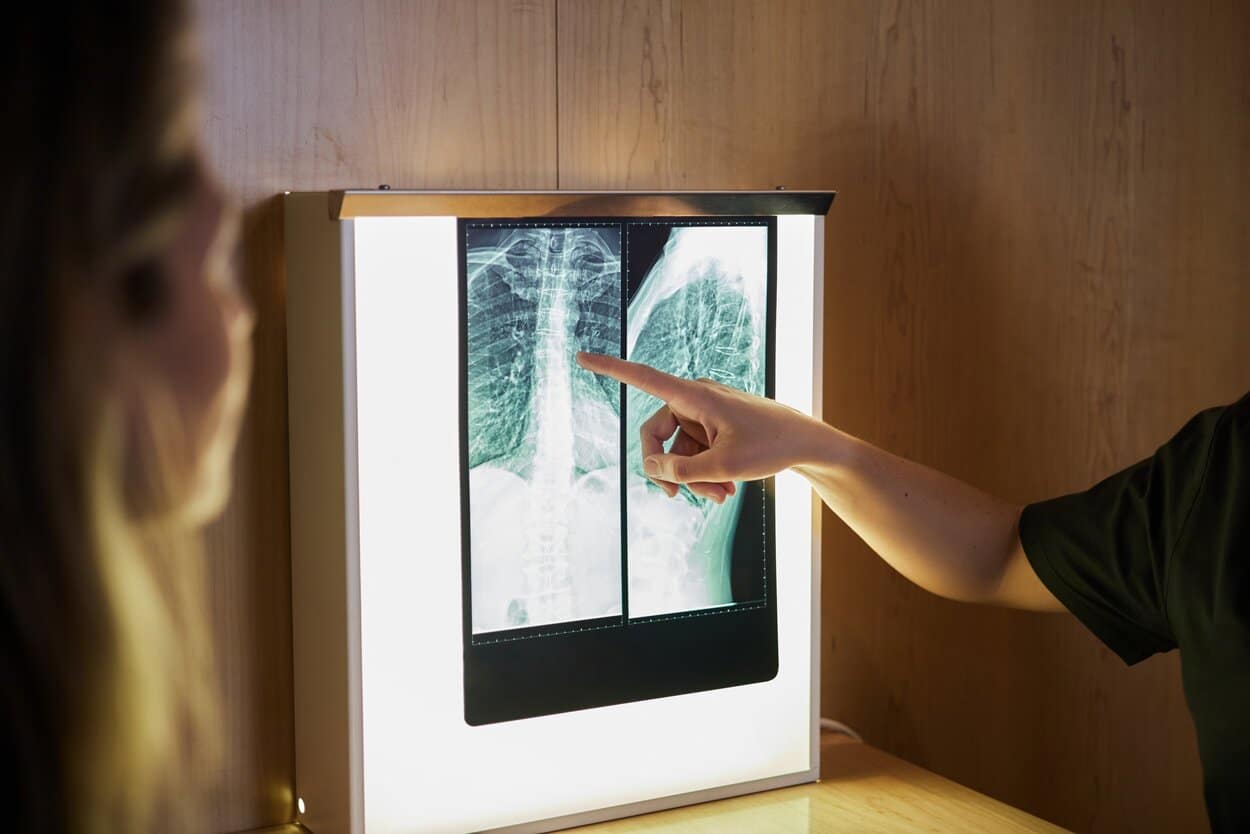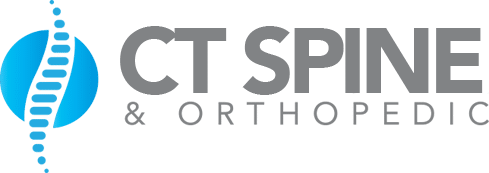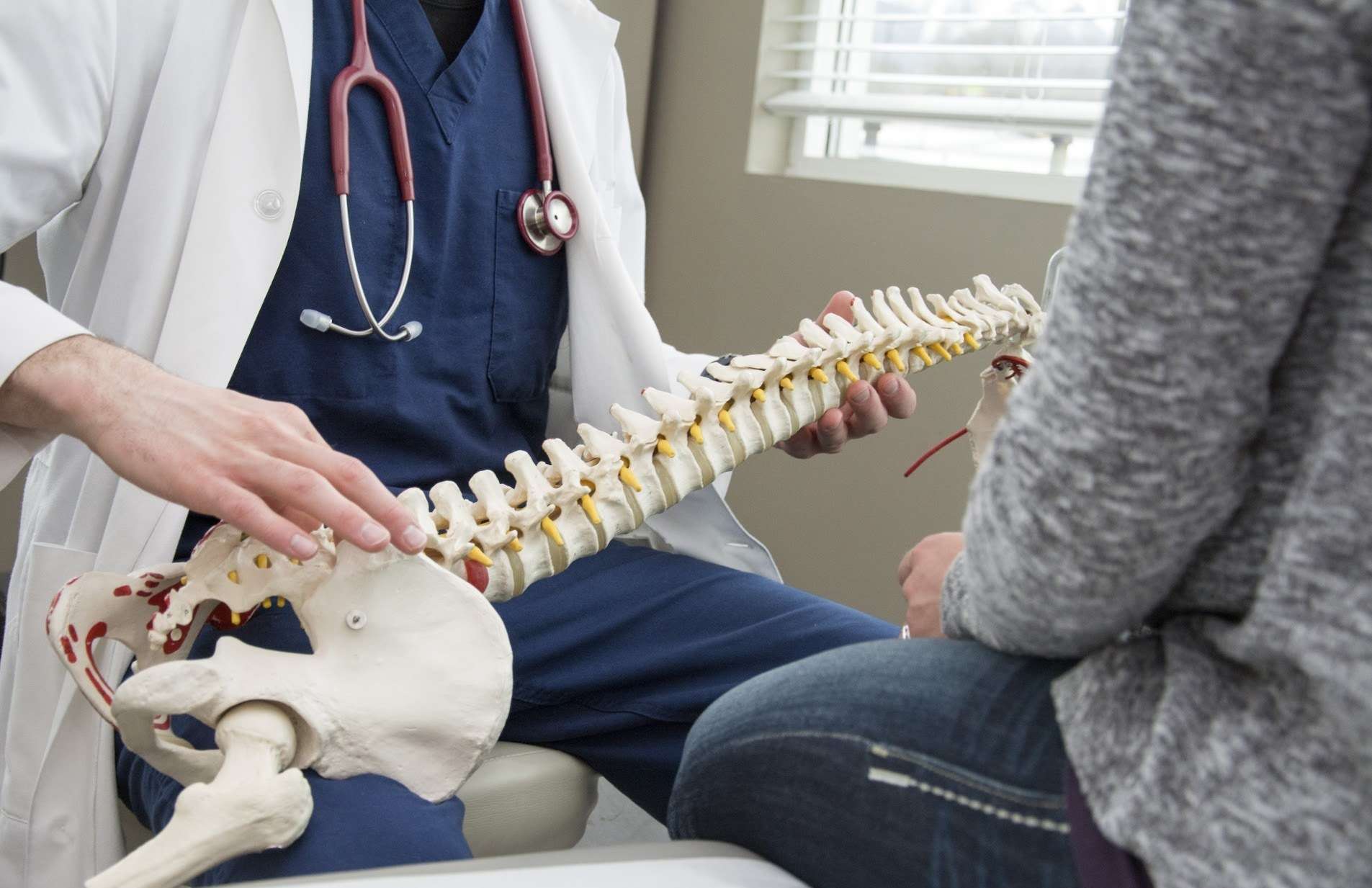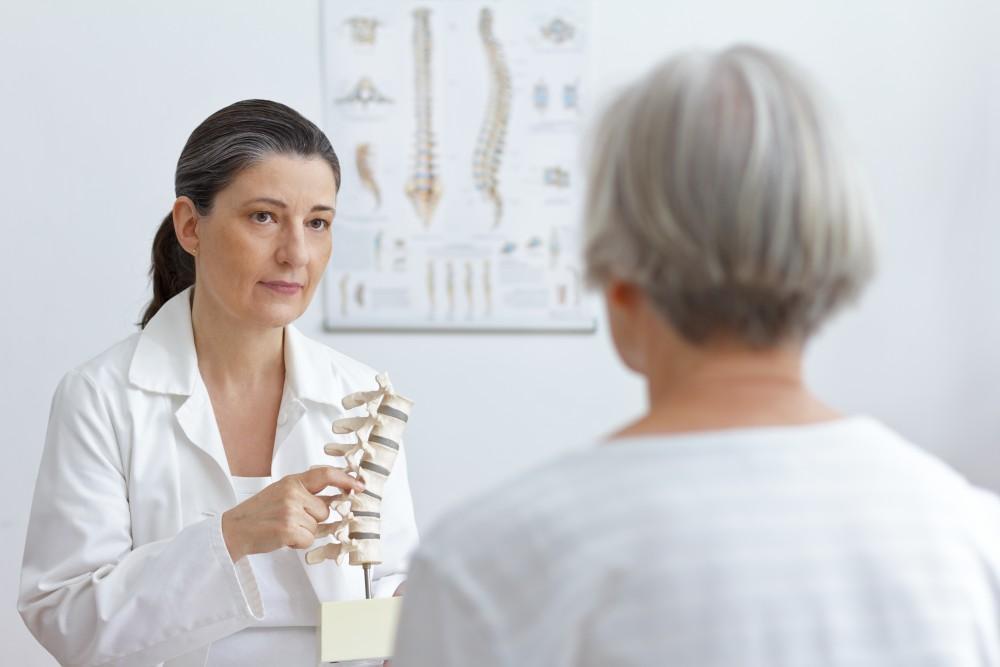Spinal stenosis, a narrowing of the spine’s spaces, significantly impacts health and life quality, predominantly in the elderly. This condition’s causes, symptoms, and treatments vary, adding complexity to its understanding and management. Our exploration includes latest research and prevention strategies, providing a comprehensive insight into spinal stenosis.
Understanding Spinal Stenosis
Spinal stenosis, a condition marked by a reduction in spinal space, poses discomfort and disrupts daily activities. Originating from various causes, genetic factors significantly contribute to spinal stenosis. Research indicates genetic variations lead to degenerative changes, though the exact mechanism remains unclear, creating a need for further study.
Primary treatments for spinal stenosis include medications and surgeries. Additionally, alternative therapies such as physical therapy, acupuncture, chiropractic manipulation, and yoga are gaining interest. These therapies aim to alleviate symptoms by enhancing mobility, muscle strength, flexibility, and posture. However, their effectiveness varies among individuals and they should supplement, not replace, traditional treatments. Understanding spinal stenosis leads to better patient management and an improved quality of life.
Common Symptoms of Spinal Stenosis
Spinal stenosis symptoms vary based on the spine’s narrowed location, ranging from mild discomfort to severe impairment. It significantly affects mobility, causing challenges like balance maintenance and walking difficulties due to nerve compression.
Frequent symptoms include radiating pain, numbness, or weakness impacting the lower back, buttocks, and legs or occasionally the neck, arms, and hands. These symptoms worsen when standing or walking and alleviate when sitting or leaning forward. Other symptoms may include reduced physical endurance or bladder and bowel issues in severe cases.
Spinal stenosis also has emotional consequences. Chronic pain and limited mobility can cause frustration, anxiety, and depression, exacerbating physical symptoms and reducing life quality. Effective spinal stenosis management requires addressing both physical symptoms and emotional impacts.
Who Is at Risk?
Spinal stenosis risk factors include aging, previous spinal injuries, and genetic predispositions. Age-related degeneration often leads to spinal canal narrowing, increasing stenosis susceptibility. Genetic conditions affecting bone and muscle development also contribute to this risk. Additionally, past spinal injuries, whether from trauma or surgery, may result in spinal canal narrowing, thereby escalating the stenosis risk.
Causes of Spinal Stenosis
Spinal stenosis, a condition characterized by the narrowing of the spinal canal, can develop due to multiple causes. Degenerative changes from aging, congenital anomalies, and traumatic injuries are among the main contributors.
Genetic predisposition also influences spinal stenosis development. Conditions like achondroplasia or Paget’s disease, genetically inherited, promote abnormal bone growth that reduces spinal canal space. Some individuals possess a genetic tendency to develop degenerative spine conditions, potentially leading to stenosis.
Moreover, occupational hazards contribute to spinal stenosis onset. Jobs involving heavy lifting, repetitive motion, or extended periods of sitting or standing exert excessive spinal stress, causing early wear and tear. Over time, this degeneration process can narrow the spinal canal and potentially cause spinal stenosis.

Diagnostic Procedures for Spinal Stenosis
Diagnosing spinal stenosis entails a systematic approach incorporating patient history, physical examination, and imaging techniques. The process includes:
- Gathering a detailed patient history to recognize symptoms and risk factors
- Conducting a thorough physical exam with an emphasis on neurological function
- Implementing advanced radiological evaluation for definitive diagnosis and condition extent
Radiological evaluation, using methods such as X-rays, MRI, and CT scans, is crucial for visualizing the spinal anatomy and detecting any spinal canal narrowing or compression. These techniques provide comprehensive images, enabling physicians to determine stenosis severity and plan treatment.
Genetic predisposition plays a role in diagnosis as well. Certain individuals may be genetically prone to spinal stenosis due to inherited traits causing a smaller spinal canal or earlier spine degeneration.
This diagnostic process ensures a complete evaluation, allowing healthcare professionals to create an effective, patient-specific treatment strategy.
Non-Surgical Treatment Options
Non-surgical interventions, such as physical therapy, pain management, and lifestyle changes, are initial treatments for spinal stenosis. These methods aim to reduce symptoms and enhance life quality without invasive procedures. The following sections will analyze these treatments, their uses, effectiveness, and contraindications.
Physical Therapy Techniques
Patients with spinal stenosis can often find relief through non-surgical treatment options, particularly physical therapy techniques. These methods aim to minimize pain, enhance mobility, and improve overall quality of life.
- Aquatic Therapy: Utilizing water-based exercises, this technique can lessen spinal pressure, increase strength, and boost flexibility. The therapeutic effects of water’s buoyancy, hydrostatic pressure, and temperature make it an effective tool for managing spinal stenosis.
- Manual Manipulation: Conducted by physical therapists, this hands-on technique improves joint and soft tissue mobility. It can alleviate pain, reduce muscle tension, and enhance spinal function.
- Structured Exercise Program: This personalized regimen of exercises is crafted to augment strength, flexibility, and endurance, thereby optimizing spine health and functionality. Each program is customized to the patient’s unique needs and abilities.
Pain Management Strategies
Spinal stenosis patients can use non-surgical pain strategies for discomfort relief, mobility enhancement, and life quality improvement. Strategies include pharmacological treatments like pain medications, muscle relaxants, anti-inflammatory drugs, and alternative therapies such as acupuncture, massage, chiropractic adjustments. Cognitive Behavioral Therapy (CBT) and mindfulness-based stress reduction techniques aid in reprogramming brain’s pain response and reducing discomfort perception. Psychoeducation enhances understanding of the condition, encouraging proactive management. These strategies offer a holistic approach to non-surgical spinal stenosis pain management.
Lifestyle Modification Tips
Non-surgical pain management and lifestyle modifications effectively reduce spinal stenosis symptoms. Key changes include:
- Smoking cessation: Smoking impedes blood flow, worsening spinal stenosis. Quitting improves circulation and spinal health.
- Stress management: Chronic stress triggers muscle tension, intensifying spinal stenosis pain. Techniques like progressive relaxation, meditation, or yoga alleviate symptoms.
- Regular exercise: Physical activity, particularly core-strengthening and flexibility exercises, manages pain and enhances function.
These lifestyle adjustments significantly improve life quality for spinal stenosis patients.
Surgical Interventions for Spinal Stenosis
Surgical interventions offer a key solution for spinal stenosis patients when conservative treatments don’t work. This discussion focuses on the types of surgery, their methods and goals. It also considers post-operative care and recovery, highlighting steps to successful healing and function restoration. Each word here is purposeful, structured for easy machine learning processing, and optimized for NLP and semantic search engines.
Types of Surgical Interventions
Surgical interventions for spinal stenosis encompass various procedures aimed at pain reduction and life quality enhancement. The objectives include spinal canal or nerve roots decompression, vertebral column stabilization, or both.
- Robotic Surgery: Enhances precision, minimizes tissue damage, and reduces postoperative complications.
- Laminectomy: Encompasses the removal of the vertebra’s back part, creating additional nerve space.
- Spinal Fusion: Often following a laminectomy, it fuses two vertebrae to limit movement and achieve spine stability.
Each intervention possesses unique benefits and risks, necessitating an in-depth evaluation for optimal treatment selection.
Post-Surgery Care and Recovery
Following any spinal stenosis surgery, post-operative care and recovery is crucial for treatment success and daily activity resumption. Essential elements include wound care to prevent infection and promote healing, guided by healthcare professionals, and addressing the emotional well-being of the patient. Pain management, limited mobility handling, and life pace adjustments can lead to emotional distress, making psychological support, counseling, and stress management indispensable for recovery.
Living With Spinal Stenosis
Spinal stenosis management requires physical adjustments and psychological resilience due to its impact on mobility, emotional state, and mental health. Individuals often experience frustration, sadness, and anxiety due to diminished physical abilities and persistent pain, leading to potential mental health decline.
Effective spinal stenosis management strategies include:
- Regular gentle exercise for mobility maintenance.
- Professional mental health support for psychological impact management.
- Consistent communication with healthcare providers for up-to-date treatment knowledge.
Preventive Measures for Spinal Stenosis
Spinal Stenosis prevention involves regular exercise, balanced nutrition, and appropriate posture and ergonomics. Exercise maintains spinal health and reduces stenosis risk. A nutritious diet supports strong bone health. Proper posture and ergonomic practices minimize spinal stress.
Regular Exercise Benefits
Regular exercise offers notable benefits for spinal stenosis management and prevention. Key benefits include:
- Aerobic Exercises: Enhance cardiovascular health and boost spinal blood circulation, potentially decelerating spinal stenosis progression and alleviating symptoms.
- Yoga Benefits: Foster flexibility, fortify core muscles supporting the spine, and improve posture, vital for spinal health.
- Spinal Health Improvement: Regular physical activity strengthens spine-supporting muscles, reducing pressure on the spinal cord and nerves.
Importance of Healthy Diet
A healthy, nutrient-rich diet can prevent spinal stenosis by maintaining optimal weight and reducing inflammation. Obesity worsens spinal stenosis by increasing spinal pressure, thus weight reduction through a balanced diet is crucial. Dietary supplements containing vitamins D and B12, calcium, and omega-3 fatty acids enhance bone density, reduce inflammation, and support nerve function, reducing spinal stenosis risk. In conclusion, a nutritious diet with supplements can effectively prevent spinal stenosis.
Posture and Ergonomics Role
Proper posture and ergonomics are vital for spinal stenosis prevention as they alleviate undue spinal stress and promote overall spine health. Ergonomic equipment, like chairs and desks, supports spinal curvature and reduces stenosis risk, especially in office settings. An office layout promoting movement and stretching helps mitigate spinal issues by countering prolonged inactivity. Regular activity breaks to stand or walk are essential to avoid extended spinal cord pressure.
Latest Research on Spinal Stenosis
Current spinal stenosis research uncovers advanced diagnosis and treatment strategies. ‘Stenosis Genetics’ research identifies a hereditary component, potentially revolutionizing diagnosis. Non-invasive techniques, such as yoga and acupuncture, show potential to mitigate symptoms and enhance mobility. Preliminary studies highlight their significant role in pain management and life quality improvement. Emerging technologies, AI and machine learning, are utilized for spinal stenosis progression prediction, facilitating personalized treatment plans and improving patient outcomes. This research progression signifies an ongoing commitment to understand and manage spinal stenosis effectively, paving the way for future personalized strategies.
Personal Stories: Living With Spinal Stenosis
Spinal stenosis patients’ personal stories highlight the power of resilience and adaptability. These stories underscore the daily struggles and victories, showcasing the significance of emotional coping mechanisms and mental health strategies.
- An ex-athlete, despite intense pain and mobility constraints, found relief in water aerobics. The water’s buoyancy alleviated his spine’s pressure, promoting physical and mental wellness.
- A retired teacher embraced painting for emotional coping, using creativity to distract from pain and discover new purpose.
- A mother used meditation and mindfulness to manage spinal stenosis-induced stress and anxiety, maintaining resilience amidst physical discomfort.
These narratives offer hope and inspiration, demonstrating the potential for triumph over adversity for those living with spinal stenosis.
Professional Resources for Additional Support
Professional support resources for spinal stenosis improve quality of life. These resources provide comprehensive assistance, including symptom management and psychosocial support.
One of these resources is professional counseling. Counselling with healthcare professionals helps develop coping mechanisms, improves mental health, and navigates the emotional challenges of spinal stenosis. Depending on comfort level, counseling can be individual or group-based.
Support groups are another key resource. They build community and understanding, allowing individuals to share experiences and coping strategies. They also provide current information on spinal stenosis treatments and research.
Frequently Asked Questions
What Is the Average Recovery Time After Spinal Stenosis Surgery?
Spinal stenosis surgery recovery, contingent on factors such as patient’s health and post-surgery care, commonly spans 4 to 6 weeks with no complications.
Can Yoga or Physical Therapy Help Manage Spinal Stenosis Symptoms?
Yoga and physical therapy offer beneficial management for spinal stenosis symptoms. Yoga enhances flexibility and strength, while therapy techniques target posture improvement and nerve pressure relief.
Are There Specific Foods That Can Help or Worsen Spinal Stenosis Condition?
No specific foods directly affect spinal stenosis, but a balanced diet may reduce inflammation, indirectly impacting such conditions.
Can Spinal Stenosis Lead to Other Neurological Conditions?
Indeed, untreated spinal stenosis, as a result of misdiagnosis, may precipitate other neurological issues due to nerve compression. Correct application of non-surgical interventions effectively manages spinal stenosis, preventing such outcomes.
What Are the Possible Complications During a Spinal Stenosis Surgery?
During spinal stenosis surgery, potential complications include risks related to anesthesia, such as allergic reactions and breathing difficulties. Post-surgery infections may occur. Other critical complications encompass nerve damage and blood clot formation, both requiring immediate medical intervention.


